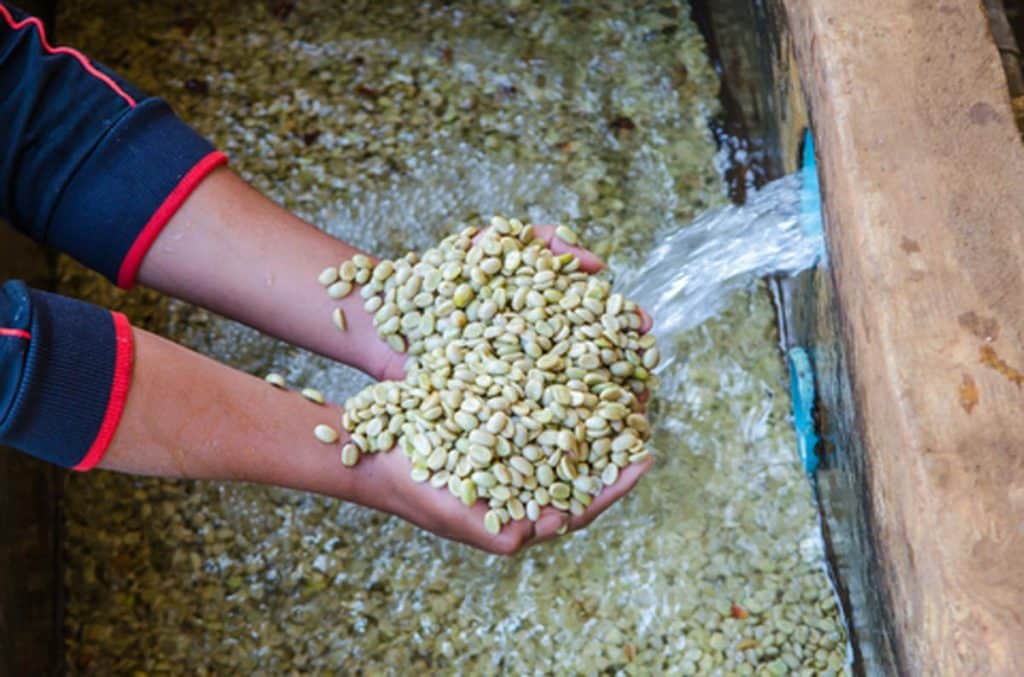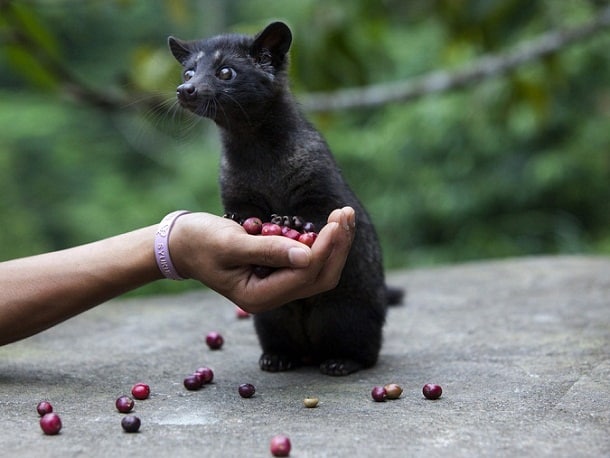What is Fermented Coffee?
Fermented coffee is, quite simply, coffee that has undergone the process of fermentation. It’s popular due to its unique smell and taste (fermentation neutralizes the bitter taste of the coffee beans), healthy properties, and increased shelf life.
In this post, you’ll learn more about the fermentation process, the benefits of fermented coffee, and how fermented coffee is made. You’ll also learn about our very own brand of fermented coffee—Pure Kopi Luwak—and see why it’s an excellent way to absorb all the benefits fermented coffee has to offer.
What is Fermentation?
Fermentation is the natural biological process of certain types of bacteria and yeasts—which are found naturally in the environment, fruits and many other places—degrading and breaking down sugars and starches and transforming them into nutrients they can use. The byproducts of this process are a series of organic compounds, among which are organic acids (like acetic acid, found in vinegar), alcohols (like ethanol, which is in every alcoholic beverage) and gases like carbon dioxide (the gas responsible for the bubbles in carbonated drinks like soda and champagne).
Fermented coffee (sometimes called “cultured coffee”), refers to coffee that has been fermented not right after the harvest, when it’s still in cherry form, but after it’s been pulped and the husk has been removed, before being roasted. When roasted, ground and brewed, fermented coffee yields aromas and flavors significantly different (and many would say better) than those of unfermented coffee.
There’s also another type of fermented coffee, which is regular coffee fermented after brewing. This is achieved by inoculating the brew with a mixture of certain yeasts and bacteria (called a culture starter) and letting it sit for several days. One popular example of this type of fermented coffee is coffee kombucha (which is distinct from the forms of alcoholic kombucha you may be familiar with) , with the main difference being that the fermentation process of coffee kombucha is carried out after brewing.
How Is Fermented Coffee Made?
The process of making fermented coffee involves a few steps:
Step #1: Soak
Soak the green coffee beans in water, making it easier for the fermenting microorganisms to come into contact with the beans and giving them a medium to grow in.
Step #2: Inoculate
Inoculate the soaked beans with 1+ types of bacteria and yeasts. Inoculation is a lot like sowing seeds, though instead of seeds you toss a handful of bacteria and yeasts in the form of a liquid “solution” called a starter solution into the soaked beans. You can buy different starter solutions with different types of bacteria and yeasts, each of which ferments the coffee beans in different ways and produce different flavors and aromas. It’s a lot like aging cheese with different microorganisms: some produce roquefort, while others produce camembert.
Step #3: Wait
Let the beans sit and wait for 24-48 hours. This is when the fermentation takes place. Over these couple of days, the bacteria and yeasts will work their magic and transform the chemical composition of the beans. The result: improved flavor, aroma, digestibility, etc.
This part of the fermentation process also takes the most know-how, since controlling things like temperature, air and light exposure, and time (knowing when to stop fermenting) is quite tricky. If you wait too long or set the temperature too high, you’ll get a vinegary-tasting coffee. Most people find the right starter solution and the best fermentation conditions through trial and error, though there are some producers who take a more scientific and systematic approach.

Step #4: Wash & Dry
Wash the beans with fresh water to remove residues from the fermentation process, and then sun dry the fermented beans prior to roasting. This is done to avoid further fermentation or spoilage in storage before the roast.
Step #5: Roast
The roasting process oxidizes many of the organic compounds inside the bean to produce the chemical compounds responsible for the taste and aroma of the brewed coffee. The way the beans are roasted has a significant impact on how the coffee tastes, which is why we pay so much attention to this step. We give our kopi luwak beans a special roast to extract even more of their unique flavor while maintaining their shelf life without using any added preservatives.
Step #6: Grind
Once you decide whether you’ll be brewing with an AeroPress, pour over or cold press, grind your beans and get going.
In some cases, fermentation can be performed on moist (not wet) green coffee beans with natural fungi, such as during the “monsoon process” in India. There’s plenty of ongoing fermentation research currently underway to determine the best microorganisms to use, the best temperature and fermentation time, and so on. The possibilities are endless, which make it exciting to think about all of the different flavors and aromas of coffee to come.
Benefits of Fermented Coffee
Fermenting coffee isn’t just trendy. There are a number of reasons for choosing fermented coffee over regular coffee. But first, a word of caution. You might think that, since the coffee is fermented, it would be full of probiotics (the good bacteria that help your digestive system) like yogurt. But keep in mind that the fermentation process in coffee occurs before roasting the beans, so all the probiotics present after the fermentation are eliminated during the roast.
Probiotics aside, here are just five of the benefits fermented coffee has to offer:
Benefit #1: Easier to digest
Fermentation transforms many hard-to-digest substances into simpler molecules that the body can handle more easily. It also has a lower concentration of certain chemical compounds associated with gastrointestinal discomfort, which makes it easier to digest than regular coffee.
Benefit #2: Easier on IBS patients
Regular coffee can be irritating for people with IBS (irritable bowel syndrome), whereas fermented coffee is usually not.
Benefit #3: Cleaner and safer
Specific microorganisms used in fermentation inhibit the appearance and growth of fungi in the beans, making them last longer without spoiling and ensuring a cleaner, safer drinking experience.
Benefit #4: Improved taste and aroma
By controlling fermentation conditions, producers can alter the taste and aroma of the coffee to decrease bitter off-notes and increase the overall quality of the coffee.
Benefit #5: Fewer Tannins
The tannins you find in coffee, tea, wine and other foods, turn your teeth yellow due to their unique chemical structure. However, fermented coffee has significantly lower levels of tannins, drastically reducing the harm done to your teeth and maintaining your pretty smile. Kopi luwak has especially low levels of tannins, since its fermentation process occurs inside the Asian palm civet cat.

Civet coffee, also known as kopi luwak or cat poop coffee, is known to be some of the tastiest and the healthiest coffee in the world.
Does Fermented Coffee Taste Different?
The simple answer is YES. Many people agree that the flavor and aroma of fermented coffee is superior to regular coffee. Coffee aroma is the consequence of a mixture of many volatile (easy to evaporate) compounds; more than a third of the substances that give coffee its aroma are produced during the fermentation itself. These aromas wouldn’t be there if the beans hadn’t been fermented. In terms of flavor, fermentation also eliminates many of the bitter off-notes of coffee, producing a sweeter, less bitter drink that most people prefer.
A Unique Type Of Fermented Coffee: Kopi Luwak
The most unique type of fermented coffee is certainly kopi luwak, which is made from the coffee beans pooped out by civet cats. After the civets digest raw coffee cherries and excrete the beans, those beans are collected, thoroughly washed, and roasted to create a fermented coffee with a flavor that’s become famous all over the world.
Kopi luwak has all of the health benefits of other fermented coffees, plus some of its own, since the fermentation process happens inside the civet cat’s digestive tract. So not only is kopi luwak easier to digest and lower in tannins, it’s also packed with brain-boosting neurochemicals and antioxidants that encourage a long, healthy life.
We’ve worked tirelessly with a family-run Indonesian coffee farm to ensure that when you buy Pure, you only get the best coffee every time. To experience the world’s healthiest kopi luwak, try Pure today.


James Cobb
I’m a simple guy that loves my coffee every morning, medium dark usually with a slight dash of heavy whipping cream. I’m now growing my own and have roasted and ground two small batches so far. I dried the cherries with the skins on and roasted them that way and was very happy. Is there a negative side to this? My plants are loaded to the gills this year. Would it truly be worth the effort to ferment, from a healthy standpoint? I’m in deep south Louisiana. Thanks so much, especially for all the info here. Good reading.